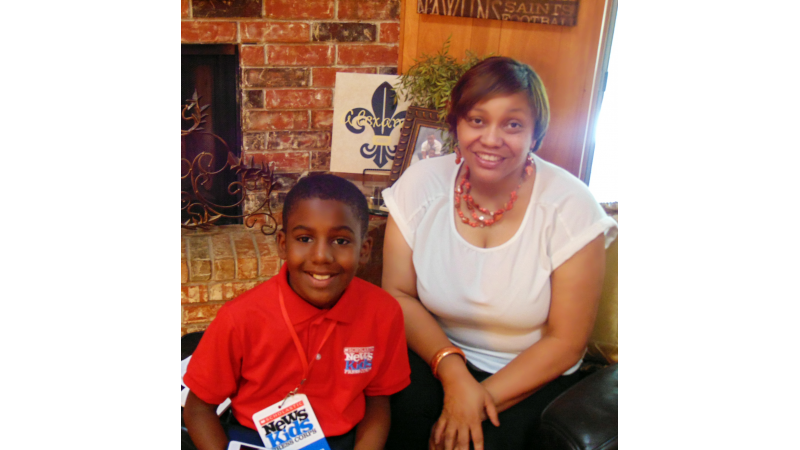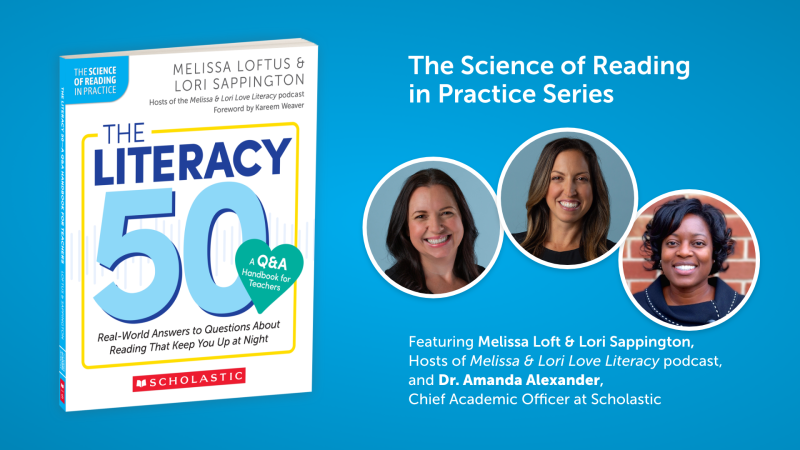 Scholastic News Kid Reporter Samuel Davis, 12, of Shreveport, Louisiana, is too young to remember Hurricane Katrina. Wanting to learn more about the storm and its aftermath, he recently sat down with Darlene Alexander and others who fled New Orleans a decade ago.
Scholastic News Kid Reporter Samuel Davis, 12, of Shreveport, Louisiana, is too young to remember Hurricane Katrina. Wanting to learn more about the storm and its aftermath, he recently sat down with Darlene Alexander and others who fled New Orleans a decade ago.
"I grabbed a bag of pictures and a couple of outfits," Alexander told Samuel in an article for our news site. The rest, of course, is history.
Alexander, who now teaches at Samuel's school, is "extremely thankful for the support" that she and her two sons, Austin and Justin, have gotten in their adopted city of Shreveport. But in a recent phone conversation with me, she acknowledged that she knows what it means, as Billie Holiday sang, "to miss New Orleans."
What does Alexander miss the most? "The food," she said. We both laughed, because I've been to New Orleans, too. "The other thing I miss," she added, "is the people. You can go into a grocery store, and everyone is family. You can be talking with someone whose hair is every color of the spectrum, and next to that person is someone in a business suit."
Still, Alexander feels lucky to have gotten out. Failing schools and a rise in violent crime, she said, had brought New Orleans to the brink before the storm.
 Ten years after Katrina, a Louisiana State University report finds that the city's African American residents "are far more skeptical" than whites about improvements to the economy, schools, and overall quality of life; 65 percent of black respondents believe that "people like them have had no say in the rebuilding process."
Ten years after Katrina, a Louisiana State University report finds that the city's African American residents "are far more skeptical" than whites about improvements to the economy, schools, and overall quality of life; 65 percent of black respondents believe that "people like them have had no say in the rebuilding process."
Many residents wait it out, hoping for a break. As President Obama said during a recent visit to New Orleans, "There's something in you guys that's irrepressible. You know the sun comes out after every storm."
Alexander, who is grateful for a second chance at life, agrees that the best of New Orleans—its jazz music, Mardi Gras celebrations, crawfish, and beignets—is better than anywhere else. "New Orleans is like one big old gumbo pot," she said. "You've got a mixture of everything. The people are unique. The cultural experiences are unique. When it comes together, it's absolutely delicious."
If you'd like to read more about the Gulf Coast post-Katrina, here are some recommendations:
Sarah M. Broom's stunning New Yorker essay catalogues her losses after Hurricane Katrina, including the death of her grandmother and the destruction of her family's "narrow camelback shotgun" in East New Orleans, where Broom was raised with 11 older siblings.
Hurricane Katrina: 10 Years of Recovery and Reflection
NPR reports on forgotten families in East Biloxi, Mississippi; a new grocery store in the Lower Ninth Ward of New Orleans; and the endurance of the second line parades.
"Katrina didn't usher in a new narrative about race in America as much as it confirmed an old one," writes University of Connecticut Professor Jelani Cobb in The New Yorker.
A Closer Look at New Orleans Post-Katrina
Chicago Tribune columnist Dawn M. Turner examines the racial inequality that continues to shadow New Orleans. "In 2005, 44 percent of black children under age 18 were living in poverty," she writes. "Today, it's more than 50 percent."
Former New York Times reporter Gary Rivlin chronicles the complicated tale of a post-Katrina New Orleans that is "back but different and currently undergoing a furious transformation."
This novel by Newbury Honor author Rodman Philbrick recounts the story of a 12-year-old boy who becomes trapped in New Orleans with his dog during the storm. For ages 10 to 14.
I Survived Hurricane Katrina, 2005
This work of historical fiction by best-selling children's author Lauren Tarshis tells of a New Orleans boy's desperate effort to survive the storm. For ages 8 to 12.
(Samuel Davis is a member of the Scholastic News Kids Press Corps. If you know of a 10- to 14-year-old who would like to become a Kid Reporter this school year, here is an application form. The deadline to apply is September 25.)
Photo of Darlene Alexander and Samuel Davis by Roslyn Davis; photos of New Orleans by Suzanne McCabe


 Race and the Storm
Race and the Storm



